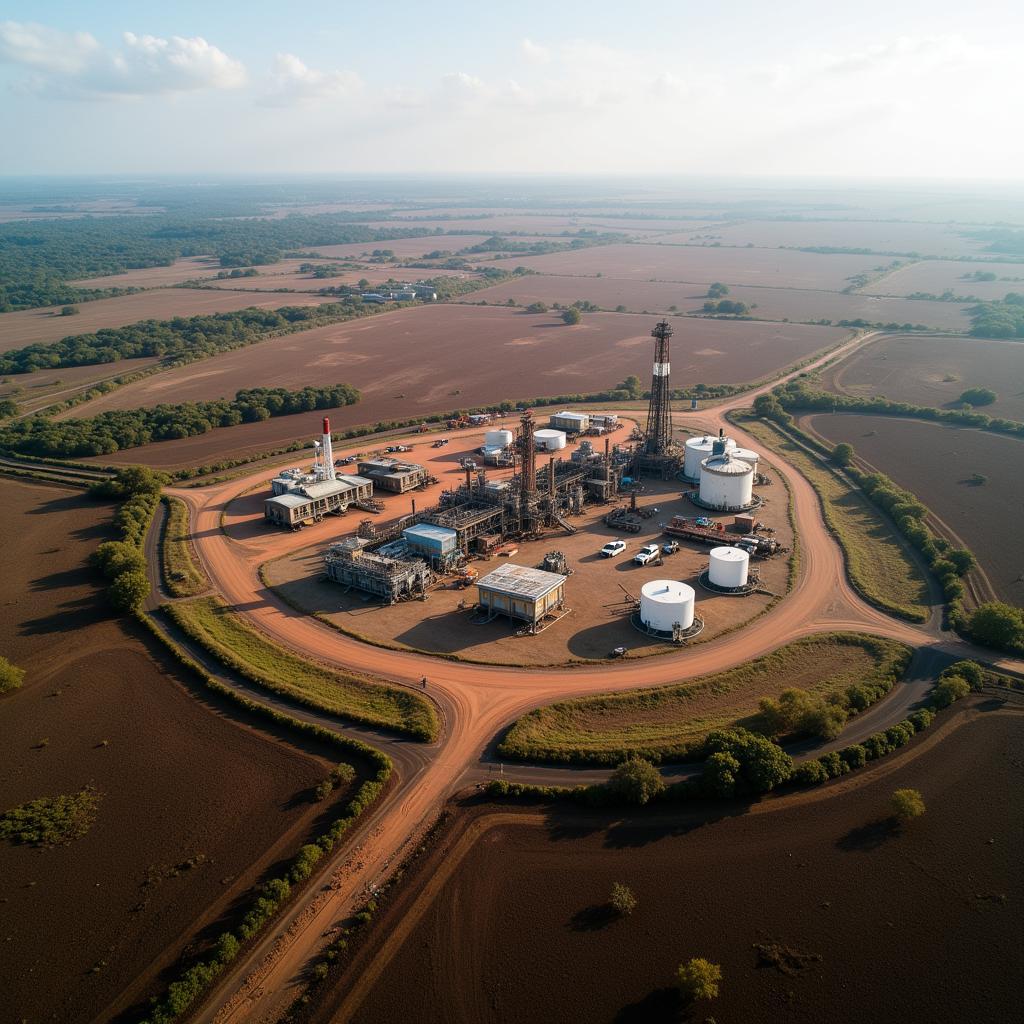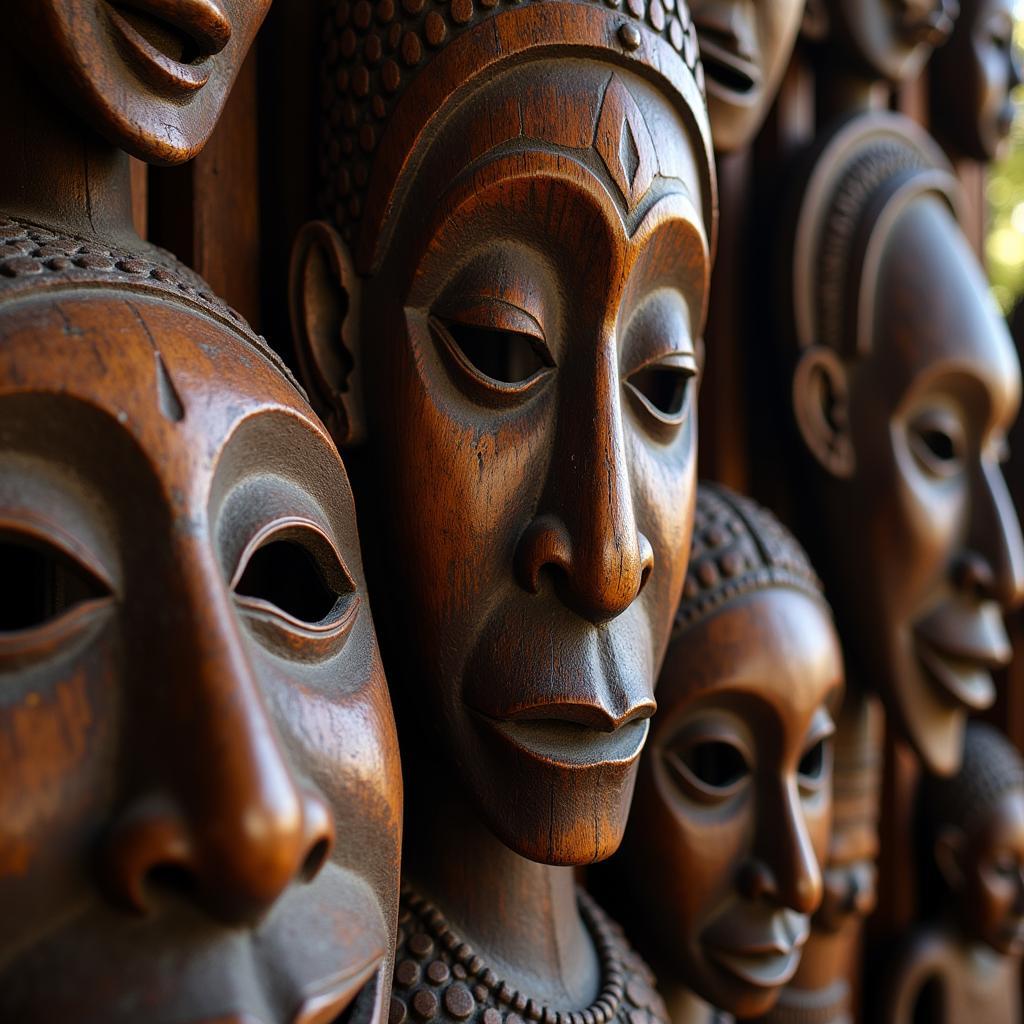Exploring the African Elephant Map: Distribution and Conservation
The African Elephant Map reveals the crucial information about the distribution of these magnificent creatures across the African continent. Understanding their range is essential for effective conservation efforts. This article dives deep into the complexities of the African elephant map, exploring its significance, the challenges faced by these gentle giants, and the ongoing conservation initiatives working to protect them. african elephant habitat map
Decoding the African Elephant Distribution Map
The African elephant map is more than just lines on a page; it’s a visual representation of a complex ecological tapestry. It shows us where these iconic animals roam, from the dense forests of Central Africa to the vast savannas of the East. These maps, often differentiated as range maps, habitat maps, or distribution maps, provide critical insights into elephant populations, their movements, and the environmental factors influencing their survival. The map highlights the significant fragmentation of elephant populations due to habitat loss and human encroachment. By studying the African elephant distribution map, we can identify critical areas for conservation and implement targeted strategies to protect these vulnerable populations.
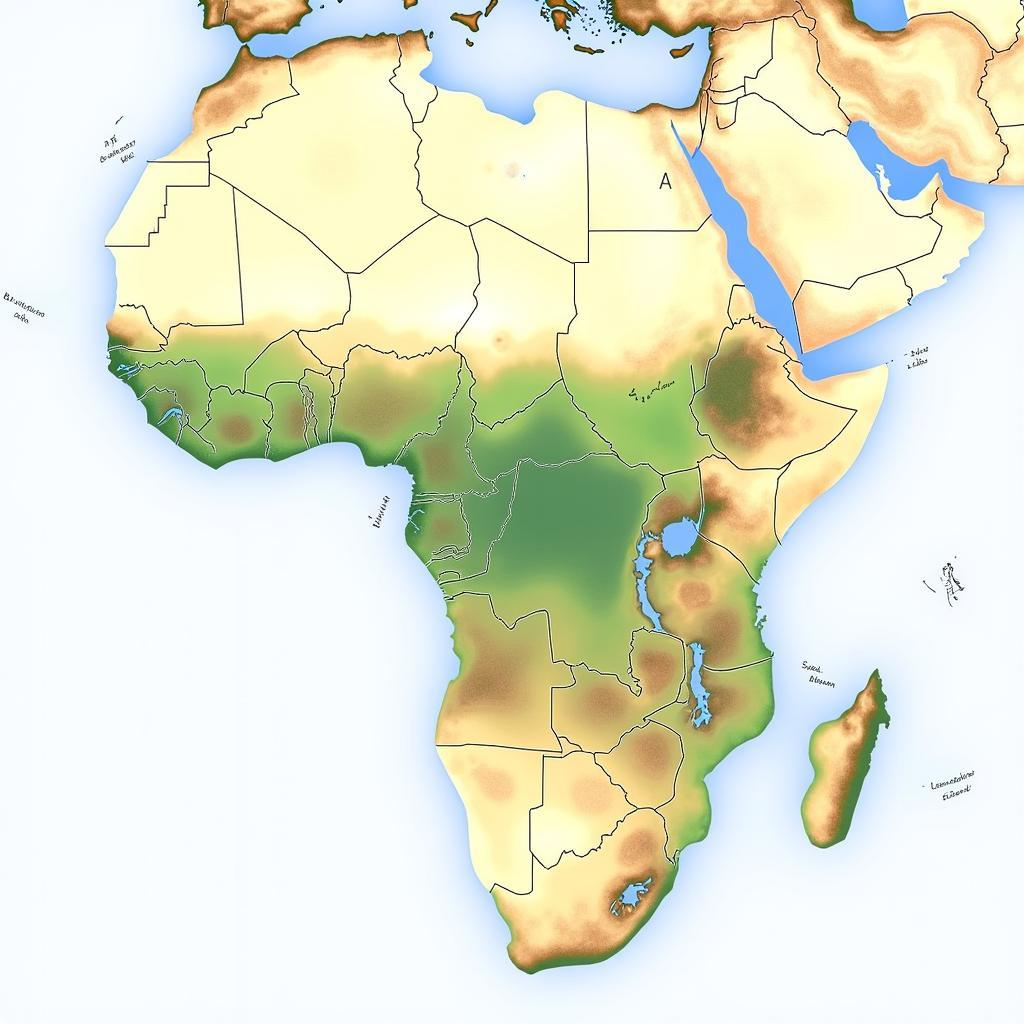 African Elephant Distribution Map Across Africa
African Elephant Distribution Map Across Africa
Understanding the African Elephant Range Map
The African elephant range map reveals the historical and current expanse of elephant territories. Over time, this range has shrunk significantly, primarily due to human activities. Factors such as habitat loss due to deforestation, agriculture, and urbanization have forced elephants into smaller, isolated pockets. This fragmentation leads to a decline in genetic diversity, making the populations more vulnerable to diseases and environmental changes. Examining the african elephant range map helps conservationists understand the shifting dynamics of elephant territories and develop effective management plans. Knowing where elephants used to roam and where they currently reside provides invaluable data for conservation efforts.
Where do African elephants live now? Examining current distribution reveals their preference for diverse habitats, including savannas, woodlands, and forests.
Threats to Elephants and the Importance of Conservation
The African elephant faces numerous threats, including poaching for ivory, habitat loss, and human-wildlife conflict. Poaching remains a significant challenge, driven by illegal demand for ivory in certain parts of the world. Habitat loss due to expanding human settlements and agricultural activities further restricts elephant populations, leading to increased competition for resources and escalating human-wildlife conflict. Understanding the interplay of these factors is crucial for developing comprehensive conservation strategies. Dr. Anika Mali, a renowned wildlife biologist specializing in African elephant conservation, stresses the urgency of the situation, stating, “Protecting elephants is not just about saving a species, it’s about safeguarding the intricate web of life that depends on them.”
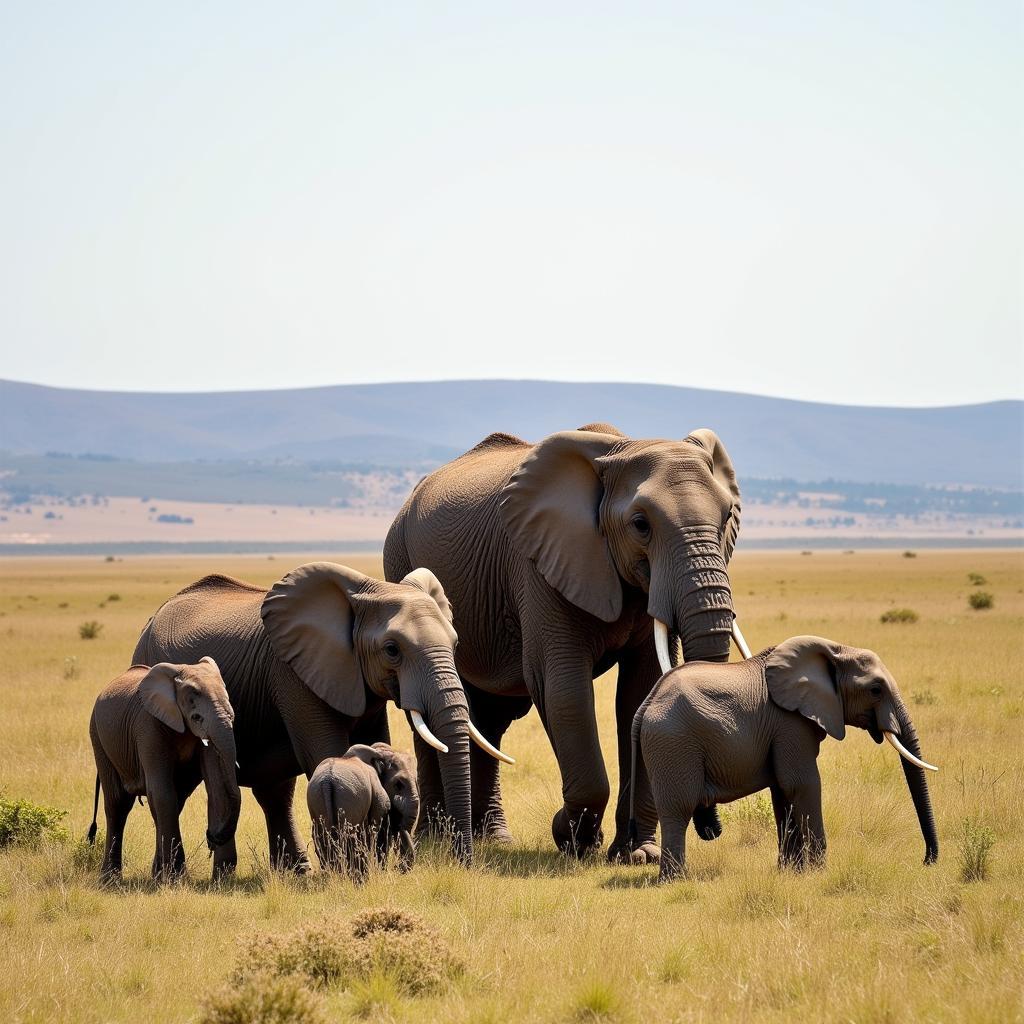 African Elephant Family in Savanna Habitat
African Elephant Family in Savanna Habitat
Conservation Efforts and Future Directions
Numerous organizations and governments are working tirelessly to protect African elephants. Conservation initiatives focus on anti-poaching efforts, habitat restoration, community engagement, and raising public awareness. Establishing protected areas and wildlife corridors helps connect fragmented populations, allowing for gene flow and greater resilience. Engaging local communities in conservation is crucial, as their involvement and support are essential for long-term success. “Conservation requires a multi-faceted approach,” states Dr. Jabari Olumide, a leading expert in African ecology, “We need to combine scientific research, community engagement, and policy changes to create a sustainable future for elephants.” Exploring the african forest location is crucial for understanding the specific needs of forest elephants, a distinct subspecies facing unique challenges.
What about East Africa’s role in elephant conservation? Several east african countries have implemented robust conservation programs and are actively involved in regional collaborations to protect elephant populations across borders. This collaborative approach is essential for addressing the transboundary nature of elephant movements and conservation challenges.
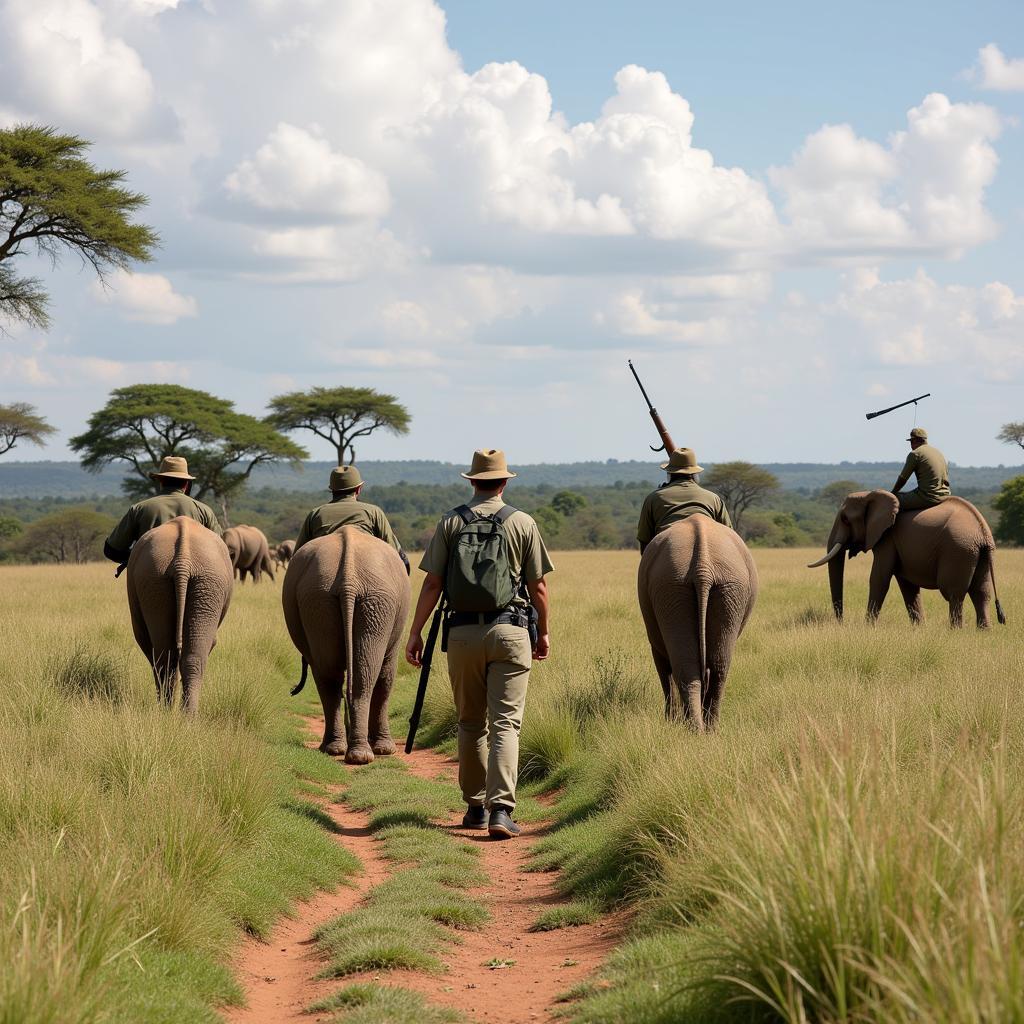 African Elephant Conservation Efforts: Anti-Poaching Patrol
African Elephant Conservation Efforts: Anti-Poaching Patrol
Conclusion
The African elephant map is a powerful tool for understanding the distribution, range, and challenges faced by these magnificent creatures. By studying the map and recognizing the importance of conservation, we can all play a role in ensuring a future where African elephants continue to roam free. Learning about elephant distribution is the first step towards supporting conservation initiatives and protecting these keystone species for generations to come. The african elephant distribution map serves as a constant reminder of our responsibility to safeguard these gentle giants and their vital role in the African ecosystem.
FAQ
- What is the difference between an African elephant range map and a distribution map?
- How has habitat loss affected the African elephant population?
- What are the main threats to African elephants?
- What conservation efforts are being undertaken to protect African elephants?
- How can I contribute to African elephant conservation?
- What is the significance of the African elephant in the ecosystem?
- Where can I find reliable information about African elephant distribution and conservation efforts?
Further Exploration
For more in-depth information on African wildlife and conservation, explore these related articles:
- The Impact of Climate Change on African Elephants
- The Role of Community-Based Conservation in Protecting Elephants
- Understanding Elephant Behavior and Social Structures
Need assistance? Contact us 24/7: Phone: +255768904061, Email: [email protected], Address: Mbarali DC Mawindi, Kangaga, Tanzania.

